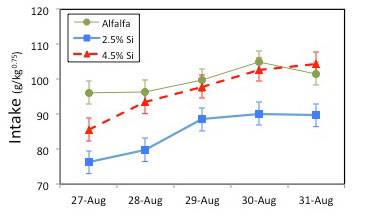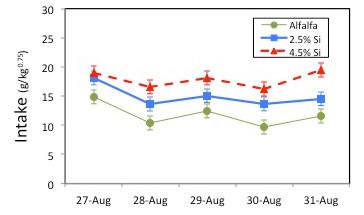Sheep, Medusahead and Supplements
Why Don't Sheep Eat Medusahead? Do Supplements Improve Intake?
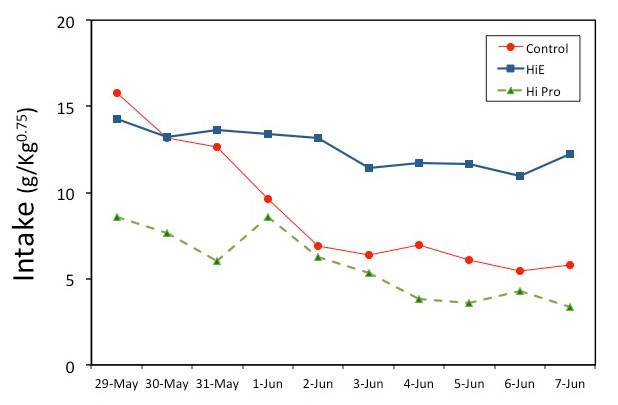
Medusahead is an invasive weed, which impacts whole ecosystems, reducing habitat and biodiversity, commercial and recreational value. Grazing may be a sustainable, efficient, and low-cost alternative for its control. However, results about its applicability are not encouraging. To date, grazing approaches have not considered new knowledge on foraging behavior like the importance of positive experiences early in life and/or how supplementation may affect intake of medusahead.
In 2012, pen trials were conducted to determine 1) how much medusahead lambs would eat 2) if a supplement would increase intake of medusahead and 3) the best supplement to enhance medusahead intake by lambs.
Supplements were:
- High protein: 60% alfalfa and 40% soybean meal. It contained 3.00 Mcal/kg of digestible energy and 28.8% crude protein
- High Energy: 70% beet pulp and 30% barley. It contained 3.54 Mcal/kg of digestible energy and11.3% crude protein
In trial 1, medusahead was harvested daily in late vegetative stage with an electric lawnmower. Lambs received supplement for 20 min. each day prior to feeding medusahead. Medusahead was fed each day ad libitum from 9 am to 4 pm. Lambs then received tall fescue hay from 5 pm until 8pm each evening.
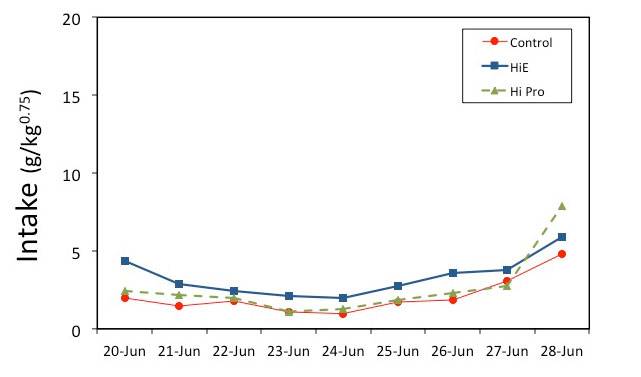
Lambs not fed supplement ate the most medusahead at the beginning of the trial, but intake declined over the 10 day trial. Lambs fed the high protein supplement never ate more medusahead than the control group. Lambs fed the high energy supplement maintained intake of medusahead throughout the trial.
In trial 2, medusahead was harvested daily in late vegetative stage with an electric lawnmower. Lambs received supplement for 20 min. each day prior to feeding medusahead. Medusahead was fed each day ad libitum from 9 am to 4 pm. Lambs then received tall fescue hay from 5 pm until 8pm each evening.
In trial 2, lambs ate very little medusahead throughout the 10 day trial. In addition , supplementation had little affect on intake of medusahead..the combination of high silica content and eclining nutrition value of medusahead provided little positive feedback to lams to keep lambs eating the plant.
Pen trials were also conducted to determine whether medusahead induces food aversions.
Three groups of 10 lambs each were fed coconut-flavored beet pulp
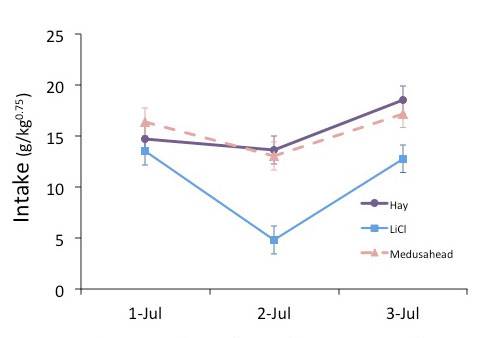
Then, the three groups received intraruminal infusions of:
- LiCl (1.5 mg/Kg BW – known to produce food aversions)
- Tall Fescue Hay (4g/Kg BW – should not produce a food aversion)
- Medusahead (4g/Kg BW – Average Amount eaten during Trial 1)
Results from the food aversion trial indicated that medusahead is not aversive. Lambs did not decrease intake of the medusahead even though they received by gavage the same amount of medusahead as lambs ate in an entire day.
At the conclusion of the first three trials it was clear to us that medusahead was not readily consumed by sheep. It was not aversive. we conducted a fourth trial to determine if the presence of silica in the feed affected intake of ground alfalfa by lambs.
Silica in medusahead is responsible for the low intake of the weed typically displayed by grazing animals. Interestingly, lambs fed 4.5% silica ate more alfalfa with silica than lambs fed 2.5% silica.

